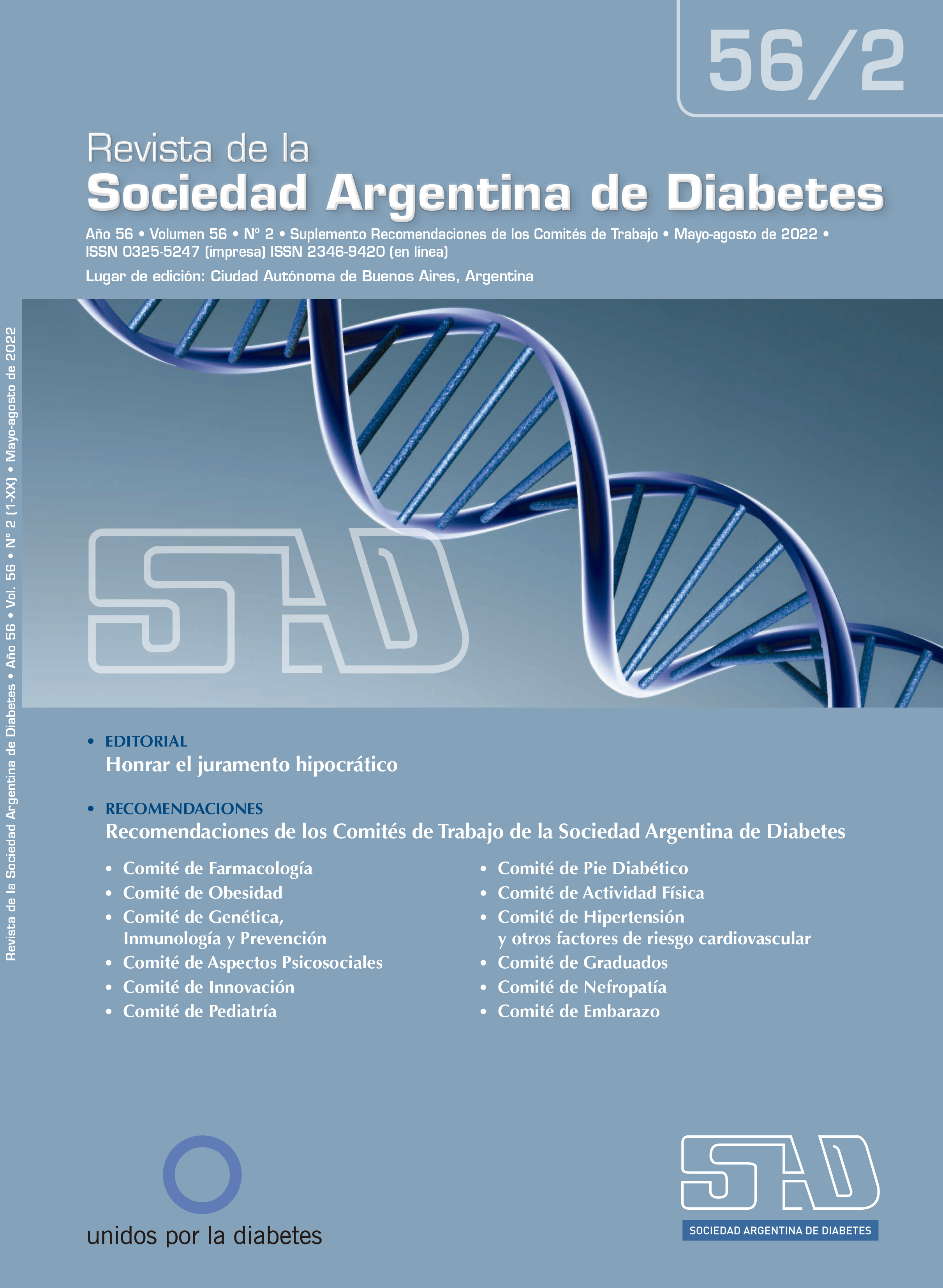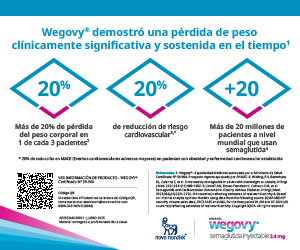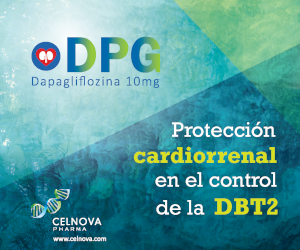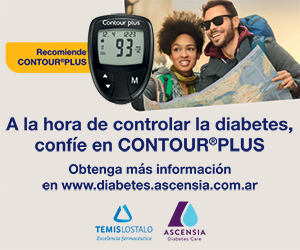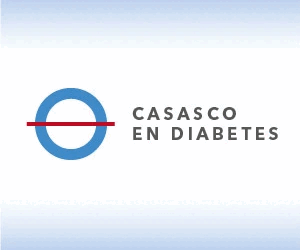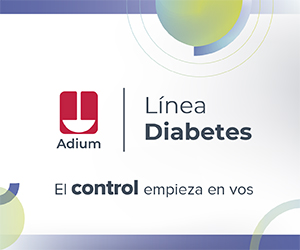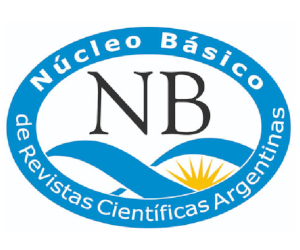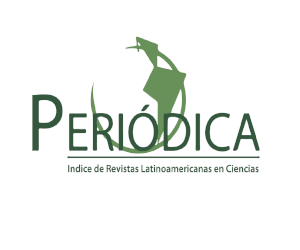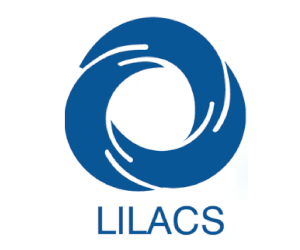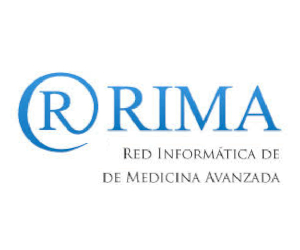Management of type 1 diabetes mellitus about physical activity, exercise and sports in children and adolescents
DOI:
https://doi.org/10.47196/diab.v56i2Sup.534Keywords:
exercise, type 1 diabetes mellitus, self-monitoring, insulin, carbohydratesAbstract
These recommendations seek to provide a safety framework for the prescription of physical activity in children and adolescents with DM1, considering the evaluation of the situations that may arise before, during and after the practice of physical activity. It includes therapeutic strategies on the type of exercise, intensive capillary glycemic control or through the use of continuous glucose monitoring (CGM) and the adequacy of insulin therapy and carbohydrate intake. It is prioritized that to optimize the benefits of exercise as part of the treatment of DM1, a complete and constant diabetes education is important, provided by an interdisciplinary team trained in the comprehensive management of children and adolescents with DM1.
References
I. Organización Mundial de la Salud. Recomendaciones mundiales sobre la actividad física para la salud. Disponible en: https://www.who.int/es/news-room/fact-sheets/detail/physical-activity.
II. 2. Organización Mundial de la Salud. Directrices sobre la actividad física, el comportamiento sedentario y el sueño para menores de 5 años. Disponible en: https://apps.who.int/iris/bitstream/handle/10665/311663/WHO-NMH-PND- 19.2-eng.pdf?sequence=1&isAllowed=y.
III. Adolfsson P, Riddell MC, Taplin CE, Davis EA, Fournier PA, et al. ISPAD Clinical Practice Consensus Guidelines 2018. Exercise in children and adolescents with diabetes. Pediatr Diabetes 2018 Oct;19 Suppl 27:205-226. doi: 10.1111/pedi.12755.
IV. Comité de Graduados de la Sociedad Argentina de Diabetes. Diabetes mellitus tipo 1 y actividad física. Rev Arg Diab 2018;52 (Sup):14-29.
V. Consenso de prevención cardiovascular en la infancia y adolescencia. Revista Argentina de Cardiología 2019;87(Sup 4).
VI. Rodríguez M. Nutrición y ejercicio en las personas con diabetes. Revista ALAD 2017; 7:40-9
VII. Englund DA, et al, Excercise reduces circulating biomarkers of cellular senescence in humans. Angin Cell 2021;20(7). doi: 10.1111/acel.13415.
VIII. Dessi P, Zaharieva MSc, Riddell MC. Insulin management. Strategies for exercise in diabetes. Can J Diabetes 2017;41:507-516.
IX. Zaharieva DP, Messer LH, Paldus B, et al. Glucose control during physical activity an exercise using closed loop technology in adults and adolescents with type 1 Diabetes Can J Diabetes 2020;44:740-749.
X. 11. Moser O, Riddell MC, Eckstein ML, Adolfsson P, Rabasa-Lhoret R, et al. Glucose management for exercise using continuous glucose monitoring (CGM) and intermittently scanned CGM (is CGM) systems in type 1 diabetes: position statement of the European Association for the Study of Diabetes (EASD) and of the International Society for Pediatric and Adolescent Diabetes (ISPAD) endorsed by JDRF and supported by the American Diabetes Association (ADA). Pediatr Diabetes 2020;21:1375-1393.
XI. 11. Smart CE, Annan F, Higgins LA, et al. ISPAD Clinical Practice Consensus Guidelines 2018: Nutritional management in children and adolescents with diabetes. Pediatric Diabetes Oct 2018;19(Suppl. 27):136-154. doi: 10.1111/pedi.12738.
Downloads
Published
Issue
Section
License
Copyright (c) 2022 on behalf of the authors. Reproduction rights: Argentine Diabetes Society

This work is licensed under a Creative Commons Attribution-NonCommercial-NoDerivatives 4.0 International License.
Dirección Nacional de Derecho de Autor, Exp. N° 5.333.129. Instituto Nacional de la Propiedad Industrial, Marca «Revista de la Sociedad Argentina de Diabetes - Asociación Civil» N° de concesión 2.605.405 y N° de disposición 1.404/13.
La Revista de la SAD está licenciada bajo Licencia Creative Commons Atribución – No Comercial – Sin Obra Derivada 4.0 Internacional.
Por otra parte, la Revista SAD permite que los autores mantengan los derechos de autor sin restricciones.



